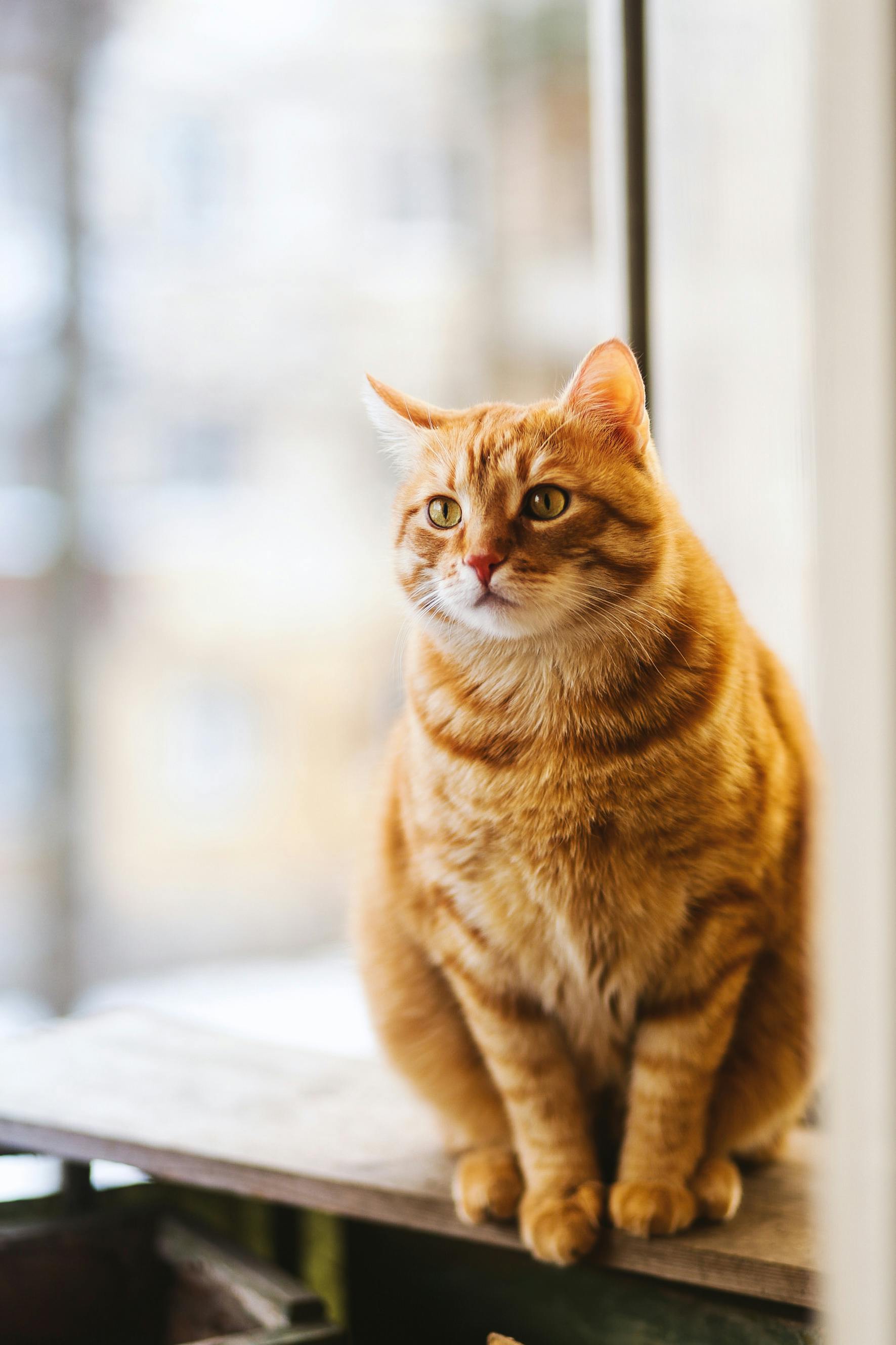Diabetes mellitus typically affects overweight, middle-aged to older cats. Unlike their canine counterparts who develop insulin-deficient diabetes, cats develop insulin-resistant diabetes primarily. This means that either an insufficient amount of insulin is being secreted by the pancreas or the body is not using secreted insulin appropriately to maintain normal blood glucose. The result is persistent hyperglycemia (high blood glucose). There may be a couple reasons why this occurs.
In diabetic cats, a type of protein hormone known as amylin is concurrently secreted with insulin. When there is insulin resistance, even more insulin and amylin are secreted. As a result, amyloid plaques can build up within the pancreas and cause significant inflammation which further reduces effective insulin secretion. The resulting inflammation can actually be so severe that the pancreatic beta cells become damaged and cease to secrete insulin altogether. This is quite rare, however. The other phenomenon that is likely occurring includes inability of target tissues within the body to respond appropriately to insulin. These target tissues are usually muscle, liver, and adipose. They use glucose for energy, maintain glucose homeostasis, and ensure appropriate lipid metabolism.

Clinical Signs
Cats tend to be stoic and therefore, many of the clinical signs associated with diabetes may not be obvious. Having to change the litterbox more frequently is one of the first signs that a pet parent notices. This is due to polyuria (frequent urination) that results from the body trying to get rid of the excess glucose in the blood. Naturally, a cat will also develop polydipsia (excessive thirst) to compensate for fluid loss in the urine and to dilute the high glucose concentration within the blood. Polyphagia (increased appetite) may also accompany these signs.
A very obvious sign unique to undiagnosed diabetic cats is something referred to as a plantigrade stance. This is a late manifestation of diabetes where persistently increased blood glucose causes nerve damage in the rear legs. Instead of the cat walking only on the rear paws, the entire bottoms of the back feet will be touching the ground. This neuropathy usually resolves after blood glucose returns to more normal levels.
Diagnosis
Diagnosing diabetes in cats may be more challenging than in dogs. Cats tend to be stressed during their veterinary visits, which results in a mild hyperglycemia in an otherwise healthy patient. For this reason, an essential part of an office visit for a suspected diabetic cat is a fructosamine test. This test provides information as to what the blood glucose levels have been over the past 2-3 weeks rather than at one point in time. An increased fructosamine level with a high blood glucose would confirm diabetes. However, a normal fructosamine level with a mildly increased blood glucose is probably just indicative of a stress response. Your pet’s veterinarian will be able to further explain these tests and their significance related to your cat.
Although a urine sample is important in the diagnosis of diabetes, it can be quite difficult to obtain these samples from cats. Cats usually need to have urine collected via cystocentesis, which is a minimally invasive procedure where a small needle is inserted through the abdomen directly into the bladder. Abnormalities within the urine such as glucose, white blood cells, bacteria, and protein can be detected using a microscope. Cats have a high renal threshold for glucose, which means it takes more glucose in the blood for it to spill over into the urine. With mild hyperglycemia or early diabetes, glucose may not yet be present in the urine. Many diabetic patients that have glucose in the urine are at increased risk of developing urinary tract infections. Your pet’s veterinarian may recommend a urine culture if test results are not obvious.
In diabetic cats, it is common to see hypercholesterolemia (high cholesterol) and hypertriglyceridemia (high blood triglycerides). With chronic undiagnosed diabetes, kidney and heart diseases can also develop.
Management
Although the majority of cats will require daily subcutaneous insulin injections, some cats can be managed with weight loss and a diet change. A high-protein, low-carbohydrate diet can help diabetic cats maintain better control of their blood glucose. With time, some cats may actually return to a non-diabetic state. There are certain diets specifically formulated for diabetic cats with the proper carbohydrate and protein ratios. Using a wet food formulation can also provide an extra source of hydration for diabetic cats and increase palatability. Your pet’s veterinarian can recommend the best diet to meet your cat’s individual needs.
When a cat is initially diagnosed, they may need to visit a veterinarian every few weeks until the diabetes is well-regulated. Bloodwork and urinalysis at regular intervals thereafter are needed while managing this chronic disease.
Complications
Because glucose regulation is important for normal physiology, diabetes can result in damage to many bodily systems, including the heart and kidneys. As mentioned above, it is very common to see hypertension in diabetic patients as well as protein loss through the kidneys. Other complications include nerve damage, damage to the eyes, and other infections.
Lastly, diabetic ketoacidosis is a severe complication that occurs in an energy-starved state when fats are broken down for energy instead of glucose in the absence of insulin. When kidneys do not filter these ketones out, they build up within the bloodstream and cause an acidic state. This metabolic disturbance is a medical emergency and requires overnight hospitalization with appropriate fluid therapy and electrolyte monitoring.
Prognosis
With the proper diet change and weight loss, some cats can revert back to a non-diabetic state. However, recurrence of diabetes can occur in these patients. Diabetes care requires a life-long commitment and regular veterinary checkups to aid in glucose regulation and promote the best quality of life for the affected cat. It is also important to note that diabetes can increase the chance of secondary complications and risk of developing infections over time.